Commissioning a Composer
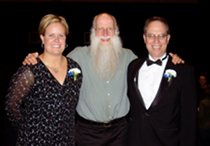
How does the commissioning process work? Here are some frequently asked questions about the composer commissioning process.
Most of the works in my catalog were written on commission. Please contact me if you wish to discuss a possible commission.
Why commission music?
To commemorate a special event such as an anniversary, retirement, ordination, installation, baptism, wedding, musical tour or program.
To provide your musicians, school, or congregation the opportunity to work with a living composer.
To enrich the musical repertoire in a particular genre.
To customize music to fit the needs of your musicians.
To dedicate a newly purchased instrument or facility.
To have a favorite text or scripture set to music.
To give a gift to your church, school, or community organization. (Donations to some organizations may be tax-deductible.)
To honor a friend, teacher, mentor, or other loved one in your life.
What are examples of your commissioned works?
I have received nearly 100 commissions to write for choir, orchestra, band, and chamber ensemble, as well as church choir and congregation. Here are a few of them:
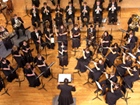 The Vanishing Snows of Kilimanjaro (Tribute and Lament for Winds), commissioned by the U.S. Air Force Academy Band of Colorado Springs.
The Vanishing Snows of Kilimanjaro (Tribute and Lament for Winds), commissioned by the U.S. Air Force Academy Band of Colorado Springs.
The Jig Is Up (wind ensemble), commissioned by a consortium of ten Minnesota colleges.
Birdscapes (solo oboe), commissioned by oboist Mark Seerup for elementary school audiences.
Sea Creatures (wind octet and narrator) and A Halama Christmas (wind octet), commissioned by the Halama Wind Octet of Minneapolis.
Pura Vida!, a three-movement suite with narration commissioned by the Minnesota Orchestra.
Promenade and Galop, commissioned by Hopkins (MN) High School Wind Ensemble.
The Fruit of Charity (congregational hymn), commissioned by Rev. Eric Haugan to honor the 25th anniversary of his ordination.
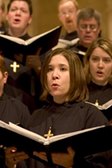
Behold the All, with text by Herbert Brokering, commissioned by the National Lutheran Choir.
Go Tell It! (SATB, full orchestra), commissioned by Northwestern College, St. Paul, Minnesota for their 1994 Christmas Concert.
o by the by (SATB, full orchestra), commissioned by the Edina (MN) High School music department to celebrate the 2005 and 2007 GRAMMY awards and to inaugurate the Edina Performing Arts Center.
Let It Shine! (contemporary style SATB anthem with sax, trumpet, piano, drums and bass) commissioned by Shepherd of the Valley Lutheran Church, Lakeland, Minnesota for the 20th anniversary of the congregation.
There Will Be Rest and To Joy, settings of poems by Sara Teasdale (SSA, flute and piano) commissioned by Cantare, the girls’ choir of the Choral Society of Northeast Pennsylvania.
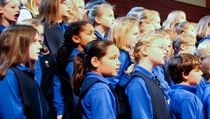
“The choirs of Angelica Cantanti commissioned Dan Kallman to help them celebrate their 20th anniversary in 2000. The result was In Endless Song: A Mosaic of American Folk Music, a wonderful suite for the five choirs of Angelica Cantanti and the Cavani String Quartet from the Cleveland Institute of Music. The parts written for both the singers and the quartet had gentle, beautiful, soaring lines, as well as challenging, colorful and interesting rhythms. One selection, Old Joe Clark, added mouth and body noises that were passed around from choir to choir! The singers (over 200 of them, ages 7 – 18) experienced great joy and had lots of fun as they performed this amazing mosaic of music written especially for them. The music also brought a beauty and peace to their souls, which I am sure will remain as one of their special life memories! We loved the piece so much we repeated it at our 25th anniversary!”
–Rita Docter, Director, Angelica Cantanti, Bloomington, Minnesota
What are the steps in commissioning a composer?
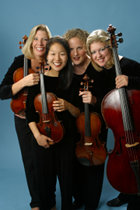 When I am commissioned by an ensemble, organization, or individual, we discuss the type of work desired, the musical resources available and any ideas the commissioner has regarding theme, style, text etc. I may need time to develop a proposal, particularly if I need to find a text. You may also consider commissioning an original text. The commission will be completed according to a timetable which may be anywhere from two months to two years, depending on the scope of the commission and my schedule. I usually attend at least one rehearsal and the premiere of the piece. In some cases I am asked to conduct the piece as well.
When I am commissioned by an ensemble, organization, or individual, we discuss the type of work desired, the musical resources available and any ideas the commissioner has regarding theme, style, text etc. I may need time to develop a proposal, particularly if I need to find a text. You may also consider commissioning an original text. The commission will be completed according to a timetable which may be anywhere from two months to two years, depending on the scope of the commission and my schedule. I usually attend at least one rehearsal and the premiere of the piece. In some cases I am asked to conduct the piece as well.
How will the commission be funded?
The commissioning fee is determined for the most part by length of the piece and instrumental or choral forces involved. Organizations may set aside money for commissioning, apply to granting organizations, or turn to individuals or supporting groups who are often happy for such an opportunity. Families often commission works for a loved one or as a special gift. I may be able to suggest granting organizations that you could contact for help. The state of Minnesota funds arts projects through the Minnesota State Arts Board and through regional arts councils.
Consortiums are another way to fund a commission. Several ensembles agree to provide a portion of the commission fee. I may be able to suggest others who would be interested in a consortium.
Who owns a commissioned piece?
The commissioning party owns a set of master copies of the commissioned piece (as well as any reproductions made for the premiere performance) and usually is free to perform the work as many times as they desire with no additional costs. The composer maintains ownership of copyright including rights to subsequent sales to other performers and all recording rights.
For further information:
Commissioning 101: An interview with Daniel Kallman
Commissioning Music: A Basic Guide and An Individual’s Guide to Commissioning Music (newmusicusa.org.)
